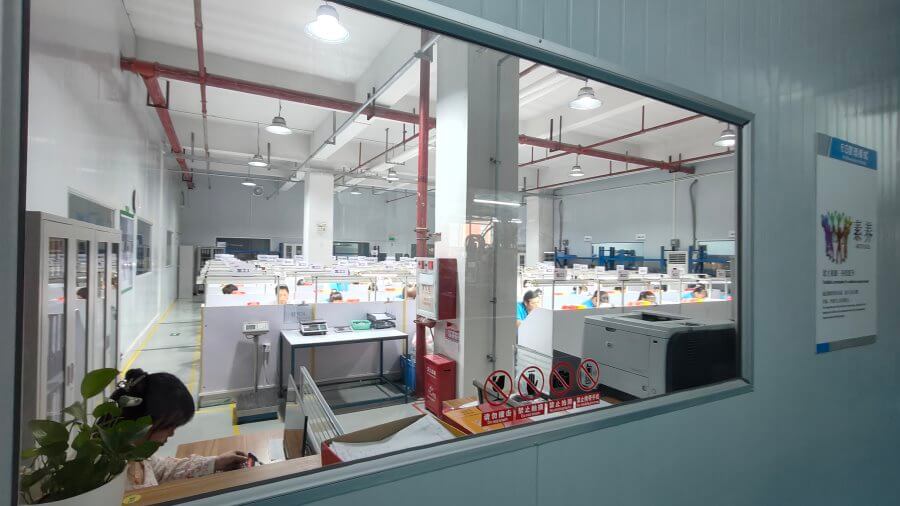Conductive silicone is made from a silicone base rubber mixed with conductive fillers, crosslinking agents, and other compounds to form a vulcanized material. Compared to ordinary conductive silicone, the advantages of conductive silicone are its low volume resistivity, low hardness, resistance to high and low temperatures (-70 to 200°C), aging resistance, good processing and manufacturing characteristics, and suitability for producing conductive silicone products with complex shapes and fine structures.
In addition to the typical high and low-temperature resistance, aging resistance, and ease of molding that ordinary silicone possesses, conductive silicone has excellent conductivity stability and thermal stability. The resistance is typically between 3–10 Ω·cm, with a relative density of 1.15, a hardness (Shore A) of 60, tensile strength of 5.7 MPa, and elongation at break of 265%. To achieve the final product, it can be mixed with methyl vinyl silicone (raw rubber), white carbon black, conductive fillers, structural control agents, and organic peroxides.
Due to its small volume, stable and reliable contact, excellent shock resistance, and easy interchangeability, conductive silicone is widely used in connections between printed circuits, radio-frequency integrated circuits, displays, and other applications. This eliminates a lot of welding labor, simplifies assembly, reduces size, lowers costs, and increases reliability. For example, it can be used in conductive keypads, conductive silicone rollers, and the connections between printed circuits, integrated circuits, and displays.
Working Mechanism of Conductive Silicone
General silicones are excellent electrical insulators. The mechanism of conductive silicone is based on two theories: chain-conductive pathways and tunneling effect.
1. Chain-Conductive Pathway:
The mechanism of chain-conductive pathways suggests that filler particles must come within nanometer-scale distances of each other to create a pressure difference. This enables the π-electrons of the filler particles to move through chain conduction, allowing current to flow.
The dispersion of filler particles in the silicone matrix must reach a certain concentration to form chain networks that create strong conductivity. Therefore, the most important factor influencing the conductivity of silicone is the amount of filler used. This is the most classic explanation for conductive silicone.
2. Tunneling Effect:
Chain-conductive pathways typically work by forming a continuous network of conductive fillers. However, when silicone is stretched and observed under a microscope, no visible carbon black chain networks appear, yet conductivity still occurs. This is due to the tunneling effect.
Even when conductive particles are not in direct contact, a thin polymer layer separates them, blocking the free movement of electrons. This separation acts as a potential barrier with a specific energy threshold. If a microscopic particle has less energy than this barrier, it might be blocked or reflected. However, in some cases, the particle can pass through the barrier—this is known as the tunneling effect.
Properties of Conductive Silicone Raw Materials
Silicone is a high-performance polymeric elastomer that combines both inorganic and organic properties. Its molecular backbone consists of alternating silicon and oxygen atoms (-Si-O-Si-), with side chains of carbon-hydrogen or substituted carbon-hydrogen organic groups attached to the silicon atoms. These groups can include methyl, unsaturated vinyl, or other organic groups. This low degree of unsaturation in the molecular structure gives silicone excellent heat-aging resistance, weather-aging resistance, and resistance to UV and ozone degradation.
Due to the high flexibility of the silicone molecular chains and the weak intermolecular forces, these structural characteristics make the vulcanized silicone soft and elastic. These features allow silicone to be widely used in electrical products that require conductivity. The conductive silicone commonly used typically incorporates reinforcing agents, conductive additives (conductive particles), structural inhibitors, and curing agents into methyl vinyl silicone to meet electrical and mechanical performance requirements.
Conductive silicone is produced by uniformly dispersing conductive particles such as acetylene black, carbon fibers, super conductive carbon black, graphite, copper powder, silver powder, aluminum powder, and zinc powder within the silicone. Pressure is applied to ensure that these conductive particles make contact, thereby achieving excellent conductivity. It is used in both military and commercial applications. The primary functions of conductive silicone are sealing and electromagnetic shielding. The products can be molded by compression or extrusion and are available in sheet form or other punched shapes. The shielding performance can reach up to 120 dB (10 GHz). Conductive silicone has excellent electromagnetic and moisture sealing capabilities and can provide good conductivity (frequency suppression up to 40 GHz) under certain pressures.
Carbon black, graphite, and nickel-coated copper powder are currently the most ideal and commonly used conductive fillers in conductive silicone. They offer excellent electrical conductivity and electromagnetic wave shielding performance. These materials also show good oxidation resistance during high-temperature molding of conductive silicone, strong environmental corrosion resistance (salt spray tests), and a long service life, ensuring a 100% product qualification rate. In terms of cost, these materials are highly competitive compared to silver-plated products such as silver-plated glass microspheres, silver-plated aluminum powder, silver-plated copper powder, and pure silver powder. The cost is stable and not influenced by fluctuations in silver prices. Carbon black, graphite, and nickel-coated copper powder provide a stable pricing performance, making them the leading filling powders for conductive silicone in the future. Moreover, due to their mature technology and excellent coating, they can perfectly fill various types of silicone.
Processing Methods for Conductive Silicone
Depending on the type of base rubber and processing methods, conductive silicone can be made into high-temperature vulcanized conductive silicone, room-temperature vulcanized conductive silicone, pressure-sensitive conductive silicone, anisotropic conductive silicone, and low-temperature conductive silicone, among others.
In recent years, the rapid development of electronics technology and instrumentation industries has promoted the improvement and development of conductive silicone, and has led to the introduction of many new processes and varieties. For example, in terms of the vulcanization process, conductive silicone now utilizes normal-pressure hot air vulcanization to replace traditional high-temperature vulcanization. In terms of product performance, high tear-resistant conductive silicone has emerged, along with pressure-sensitive conductive silicone, which becomes conductive in the pressed areas while remaining insulating in unpressed regions by adding specific metal powders into the silicone.
Basic Properties of Conductive Silicone
Conductive silicone must be subjected to a certain amount of compression force to achieve good conductivity. Therefore, the structural design must ensure the appropriate pressure without over-compression. The optimal compression for sheets is 7–15%; for solid round or D-shaped products, it is 12–30%; and for tubular or P-shaped products, it is 20–60%. The main properties of conductive silicone include the following:
1. Volume Resistivity
Volume resistivity measures the conductive performance of conductive silicone. As a conductor, the volume resistivity of conductive silicone must be lower than 10^5Ω·cm. The lower the volume resistivity, the better the conductivity.
2. Mechanical Properties
The mechanical properties of conductive silicone mainly include tensile strength, elongation at break, tear strength, Shore A hardness, and permanent compression deformation.
3. Aging Resistance
Aging resistance is a critical property of conductive silicone, directly affecting the stability and service life of the product.
4. Shielding Effectiveness (dB)
Shielding effectiveness is an important index for electromagnetic shielding materials, which is related to conductivity. The stronger the conductivity, the higher the shielding effectiveness. Generally, the shielding effectiveness of conductive silicone is greater than 60dB.
Difference Between Antistatic Silicone and Conductive Silicone
A resistance range of 10^6 to 10^12 ohms is referred to as antistatic (also known as electrostatic dissipative), while a resistance above 10^12 ohms is considered insulating. Most silicone products on the market are generally insulating.
- Antistatic silicone products have a surface resistance value ranging from 10^5 to 10^12 ohms. Resistance between 10^6 and 10^9 ohms is permanent, but the material performance may deteriorate. Resistance above 10^9 ohms is considered temporary antistatic. Antistatic silicone products have a surface resistance of 10^6 to 10^9 ohms.
- Conductive silicone products have a surface resistance value below 10^5 ohms, which is considered conductive grade. The volume resistivity typically ranges from 3 to 10Ω·cm, with a relative density of 1.15, Shore A hardness of 60, tensile strength of 5.7 MPa, and elongation at break of 265%. When the volume resistivity is below 10 ohm·cm, conductive silicone also exhibits electromagnetic shielding properties.
Types of Conductive Silicone
Conductive silicone products are available in two forms: molded and extruded. Molded conductive silicone can be made into sheets of various thicknesses, molded products, strip products, and die-cut flat gaskets. Extruded conductive silicone can be made into continuous gaskets with various standard cross-sections, including rectangular, round, D-shape, U-shape, P-shape, and other thin-walled structures. Custom cross-sections can also be made according to user requirements.
Manufacturing Process of Conductive Silicone
The manufacturing process of conductive silicone is largely the same as that for regular silicone keypads and silicone products. The process includes preparation of materials, molding, printing, spraying, edge trimming, and other operations. The methods and techniques used are also similar to those used in making silicone keypads. However, conductive silicone adds an extra step, which is the inclusion of conductive materials. These conductive materials may cause some issues during molding or edge trimming. Therefore, the manufacturing process of conductive silicone is generally more complex than that of regular silicone products.
Market Applications of Conductive Silicone
When the volume resistivity of conductive silicone is less than 10 ohm·cm, it exhibits electromagnetic shielding capabilities. With a volume resistivity below 10 ohm·cm, conductive silicone is mainly used in electromagnetic shielding applications, such as in enclosures, cabinets, control rooms, power transmission and transformation engineering, electronic and microwave waveguide systems, and connector gaskets. Conductive silicone has the advantages of small size, stable and reliable contact, excellent shock resistance, and easy replacement. It is used in connections between printed circuits, radio frequency integrated circuits, displays, etc. This helps reduce the amount of welding labor, simplifies assembly, reduces size, lowers costs, and improves reliability. For example, it can be used in conductive keypads, conductive silicone rollers, connections between printed circuits, integrated circuits, and displays.
Future Development of Conductive Silicone
Newly developed conductive silicone technologies will undoubtedly have a profound impact on the future market landscape. Looking at the global conductive silicone market, the development trends for the future mainly include the following:
(1) Improve conductivity while reducing the amount of filler used;
(2) Maintain and improve the molding and processing performance, mechanical properties, and other characteristics of conductive silicone while enhancing its conductivity;
(3) Develop new types of conductive materials and broaden their application fields.
From a technical perspective, replacing metal materials with polymer materials is the future trend in the field of material science. This will lead to an increasing demand for conductive polymers, particularly conductive silicone, with its application areas gradually expanding. This will inevitably place higher demands on conductive polymers.





